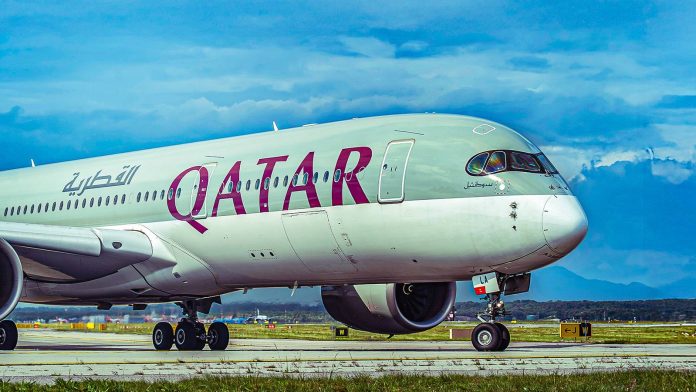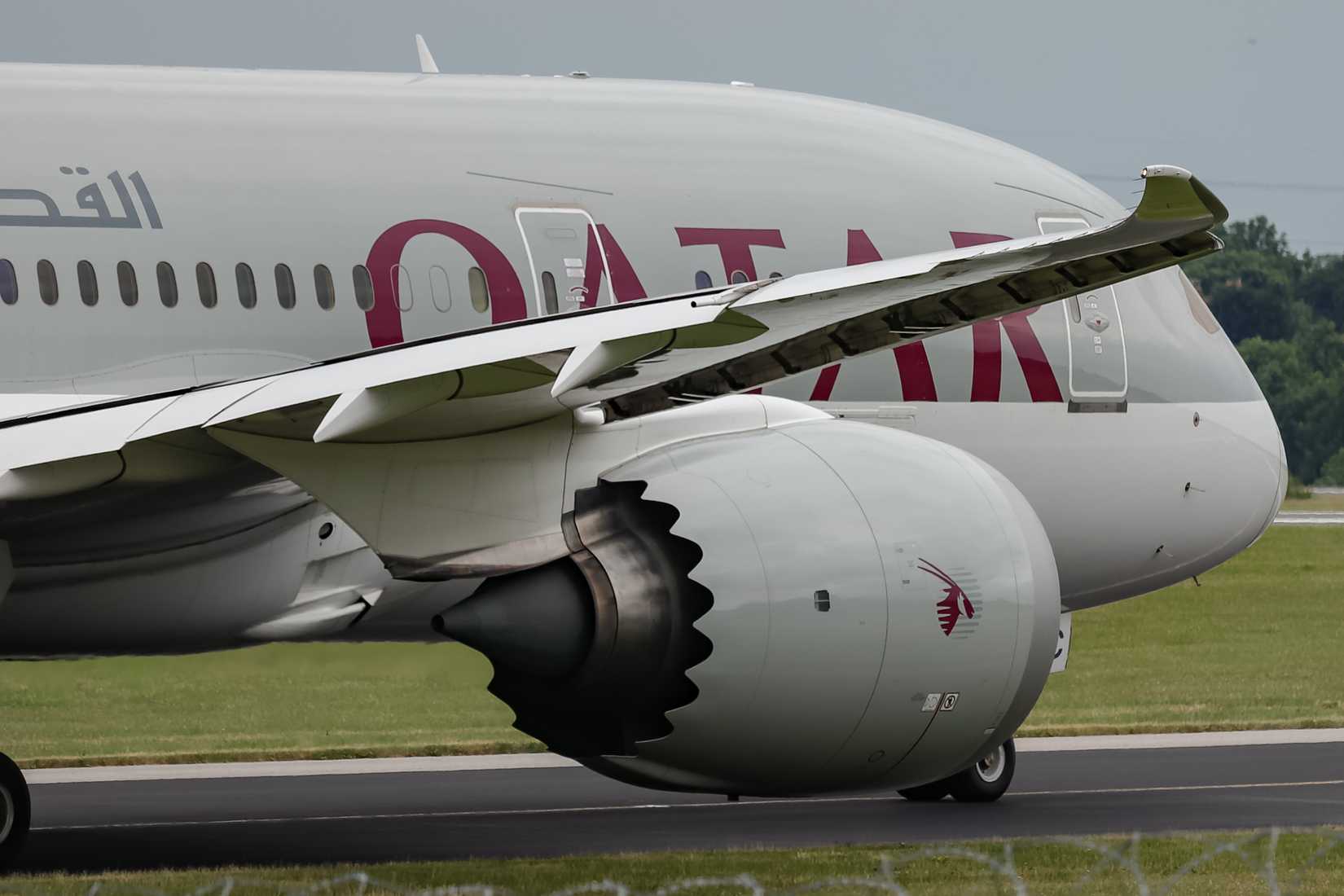![]() Qatar Airways has built one of the most technologically advanced and diverse widebody fleets in the world. From the twin-engine Boeing 787 to the Airbus A350, its lineup reflects both ambition and adaptability. Each aircraft type serves a specific role within the network, but one clearly stands above the rest in performance and prestige. Relevant data shows that the airline’s long-haul schedules are dominated by the Airbus A350-1000.
Qatar Airways has built one of the most technologically advanced and diverse widebody fleets in the world. From the twin-engine Boeing 787 to the Airbus A350, its lineup reflects both ambition and adaptability. Each aircraft type serves a specific role within the network, but one clearly stands above the rest in performance and prestige. Relevant data shows that the airline’s long-haul schedules are dominated by the Airbus A350-1000.
The Doha-based carrier has become synonymous with efficiency and innovation. Its ability to deploy the right aircraft on each route keeps load factors high and operating costs controlled. This balance between flexibility and capacity has positioned Qatar Airways as a leader in premium long-haul travel. The Airbus A350-1000 now represents the flagship of that success, combining elegance, range, and efficiency in a way few other aircraft can match.
The Widebody Backbone Driving Global Reach
Qatar Airways operates one of the most modern long-haul fleets in the world. Its widebody aircraft connect Doha to over 160 destinations, ranging from Sydney to São Paulo. According to the data, routes such as Doha–Miami, Doha–Los Angeles, and Doha–Dallas/Fort Worth highlight how crucial large twinjets are to its network. These long-distance services rely on consistent performance across multiple aircraft types. This approach allows Qatar Airways to sustain high reliability while efficiently managing complex long-haul schedules across time zones.
The airline’s long-haul schedule is anchored by the Airbus A350 and Boeing 777 families. Together, they account for the majority of seat capacity and available seat miles on global routes. This balance allows Qatar Airways to tailor operations to each market’s demand and distance. The data shows that these aircraft enable nonstop connections between Qatar and every inhabited continent. Their combined deployment provides the carrier with flexibility to respond to seasonal shifts and fluctuating travel trends.
Fleet efficiency remains a major strategic goal for the carrier. By operating modern aircraft with lower fuel consumption, Qatar Airways keeps operational costs in check while maintaining its reputation for five-star service. The widebody fleet also provides scheduling flexibility, allowing for quick aircraft swaps when demand fluctuates. This ongoing modernization strategy underpins the airline’s long-term goal of maintaining a younger, more sustainable fleet across every global region.
Airbus A350 Leading The Future
The Airbus A350-1000 has emerged as Qatar Airways’ true flagship. Designed for ultra-long-haul routes, it offers efficiency and passenger comfort unmatched by most competitors. The data shows that the airline operates 25 A350-1000s with 17 more on order, highlighting its long-term reliance on the type. The aircraft’s range of nearly 8,700 miles allows nonstop service to destinations such as Los Angeles and Auckland. Its consistent performance makes it the preferred aircraft for Qatar Airways’ most prestigious routes.
Inside the cabin, the A350-1000 showcases the carrier’s award-winning QSuite business class. The layout features fully enclosed suites, creating privacy that rivals first-class experiences. Passengers benefit from improved humidity, advanced lighting, and wider seats throughout the cabin. The data shows that the A350 operates a majority of the airline’s high-yield intercontinental routes. Its reputation for comfort has elevated Qatar Airways’ position as one of the top premium carriers globally.
Qatar Airways Widebody Fleet Review
|
Aircraft Type |
Active |
To Be Delivered |
Average Age |
|
Airbus A350-1000 |
25 |
17 |
5.4 years |
|
Airbus 350-900 |
33 |
8.5 years |
|
|
Boeing 777-300ER |
56 |
8.5 years |
|
|
Boeing 787-9 |
24 |
3.8 years |
|
|
Boeing 787-8 |
31 |
11.2 years |
From an operational standpoint, the A350-1000 leads in fuel efficiency and reliability. Its carbon-fiber construction and new-generation engines reduce emissions while lowering maintenance costs. The aircraft’s quiet profile supports Qatar Airways’ environmental initiatives and noise-reduction targets. This combination of sustainability and range aligns with the airline’s future growth strategy.
Comparing Fleet Strength Across The Network
Qatar Airways maintains a large and flexible mix of widebody aircraft. Fleet data from ch-aviation shows that the airline operates the A350-900, Boeing 777-300ER, Boeing 787-9, and 787-8 alongside its A350-1000s. This diversity ensures operational adaptability across a variety of route types and passenger volumes. Each aircraft type plays a complementary role in the overall network. Fleet records indicate that this balance enhances utilization and efficiency.
According to the same data, Qatar Airways has 33 active A350-900s and 25 A350-1000s. In the Boeing segment, 56 777-300ERs form the backbone of high-capacity operations to key global destinations. The data shows that these aircraft allow the airline to maintain frequency and reliability across both business and leisure markets. This distribution reflects a deliberate strategy to combine capacity with sustainability. It also highlights Qatar Airways’ focus on consistency across all long-haul services.
The fleet data illustrates a strong balance between range, age, and technology. While the A350-1000 leads as the flagship, the 777 series continues to handle the bulk of high-demand services. This diversity provides the carrier with resilience and scheduling agility. It also positions Qatar Airways to meet future capacity growth without compromising standards. The airline’s disciplined approach to fleet management supports its reputation for reliability and innovation.
The Boeing 777 Continuing Heavyweight Duties
The Boeing 777 remains the powerhouse of Qatar Airways’ network. Recent data shows that 56 777-300ERs are active in daily service, making it the largest subfleet in operation. These aircraft connect Doha with major cities such as London, Bangkok, and New York. The 777’s reliability and payload capacity make it indispensable for long-range operations. Fleet records indicate that these jets also carry significant cargo loads that support the airline’s logistics arm.
The aircraft’s spacious configuration allows Qatar Airways to serve dense markets while maintaining premium service standards. With seating for over 350 passengers, it delivers capacity without compromising comfort. The data shows that the 777 remains one of the most profitable models in the fleet. Its proven performance gives Qatar Airways the flexibility to manage demand across multiple continents. The type continues to be an essential component of its long-haul portfolio.
Plans include introducing the Boeing 777-9, which will eventually replace the older 777-300ERs. The next-generation model will bring quieter engines, improved aerodynamics, and lower fuel burn. This investment supports the airline’s sustainability goals and long-term efficiency targets. Until then, the 777 family will remain central to Qatar Airways’ global expansion. Its legacy as a dependable workhorse continues to define much of the carrier’s network capacity.
The Boeing 787 Expanding Operational Flexibility
The Boeing 787 plays a vital role in maintaining Qatar Airways’ operational agility. The airline operates 31 787-8s and 24 787-9s across medium- and long-haul routes. This type is used for markets requiring long range with slightly lower capacity. Its efficiency and reliability make it ideal for connecting secondary cities to Doha. Fleet records indicate that this flexibility has strengthened the carrier’s route diversity.
The 787’s composite construction and efficient engines significantly reduce fuel burn and emissions. Its range of approximately 7,500 miles allows Qatar Airways to operate direct services to Europe, Africa, and Asia. The data shows that this aircraft family underpins the airline’s mid-range network. Passenger feedback has consistently praised the 787 for its quiet cabin and smooth ride. It has become a preferred aircraft for travelers seeking comfort on long flights.
Qatar Airways maintains a consistent onboard product across both 787 variants. The cabins feature advanced lighting, optimized humidity, and WiFi access aligned with the airline’s five-star standards. These touches ensure that the Dreamliner experience remains true to the carrier’s reputation for quality. The 787 family continues to complement larger aircraft while improving overall fleet economics. Its presence underscores the importance of flexibility in sustaining a global network.
The Future Of Qatar Airways Widebodies
Qatar Airways’ strategy emphasizes modern twinjets that balance sustainability with performance. The combination of Airbus A350s, Boeing 777s, and Boeing 787s forms the foundation of its long-haul operations. The A350-1000 will represent an increasing share of scheduled flights as deliveries continue. The data shows that this transition will gradually phase out older A330s and selected 777s. This modernization reflects the airline’s commitment to both comfort and environmental progress.
The airline’s fleet renewal plan aligns with global sustainability goals. The A350 and 787 families contribute to reduced emissions through fuel-efficient designs. Qatar Airways also focuses on passenger well-being, investing in improved air quality and cabin technology. These efforts maintain its position among the world’s most environmentally conscious premium carriers. The widebody strategy ensures future competitiveness in an evolving aviation landscape.
For passengers, the result is one of the youngest and most comfortable fleets in operation. The A350-1000 embodies Qatar Airways’ focus on excellence, combining advanced technology with world-class service. Its continuing introduction across long-haul routes reinforces the airline’s reputation for innovation. As the data shows, the A350 remains the centerpiece of the carrier’s expansion strategy. Qatar Airways’ dedication to precision and passenger satisfaction ensures its flagship status will continue well into the next decade.













